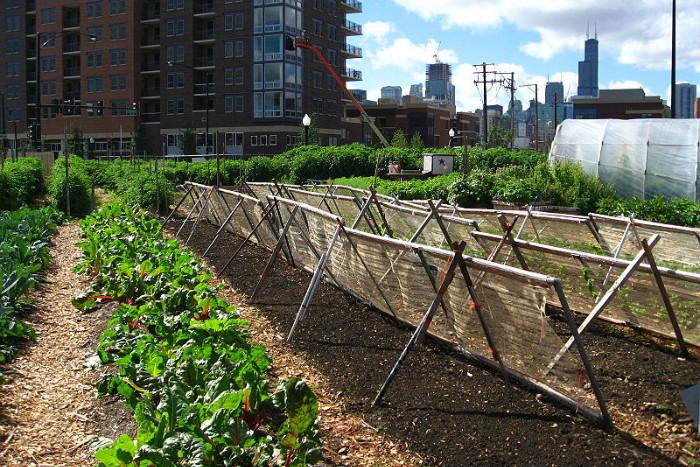By Rachelle Gaynor, AccuWeather.com Staff Writer
April 30,2015; 10:45PM,EDT
"City and suburban agriculture takes the form of backyard, rooftop and balcony gardening, community gardening in vacant lots and parks, roadside urban fringe agriculture and livestock grazing in open space," according to the United States Department of Agriculture's (USDA) National Agricultural Library.
Urban farming provides a wide variety of potential benefits to people in the area. Growing locally allows people to access the freshest products since their food would no longer be transported from long distances. This can help to increase taste and nutritional value. Since food is so locally available under these agricultural practices, consumption of fresh fruits and vegetables have been shown to increase, according to research by the University of California Division of Agriculture and Natural Resources.
In addition to personal benefits, urban agriculture offers a host of environmental incentives to invest in these changes. According to Urban Farming™, this form of agriculture allows unused land and wasted resources to be put to use in order to help support local communities. Increased green space can also help reduce soil degradation and keep temperatures lower in hot urban spaces.
RELATED:
Sustainability is Key to Fight World's Food Crisis Amid Drought, Floods
PHOTOS: Green Roofs Now Required in France are Not Only Energy Efficient but Also Stunning
Thirty 'Then and Now' Photos That Show Dramatic Changes on Earth
"Cities like Los Angeles, that have a significant amount of undeveloped vacant land, are good candidates for urban agriculture," Rachel Surls, sustainable food systems adviser at the University of California Cooperative Extension, said.
Of course, the drought gripping the West hampers opportunities for successful agriculture of any kind. Access to sustainable water, as well as sunshine and flat land, are required to be successful with urban farming, according to Surls.
"The city of Los Angeles has some 8,000 vacant lots; the challenge is gaining access to them," Surls said.
Other challenges that new farmers in the urban atmosphere may face are strict land and zoning restrictions, testing soils, putting in a water line if one does not exist and finding a viable market to sell their products.
"Sometimes urban farmers try to sell to farmers' markets, but find that it's hard to compete with the larger farms where they offer a wide variety of produce and can sell at a lower price, compared to urban farms that are mostly less than three acres in size," Surls said.
In order to help new urban farmers learn how to keep the sustainability trend alive amid all of these challenges, new technologies have been emerging. One such technology is HUEMID, developed by Carlo Ratti Associati with Walter Nicolino for Danese and Artemide.
HUEMID is a planting vase for new urban gardeners that changes colors based on humidity levels to indicate when a plant needs watering. They are flexible, can be reused and can be stretched or compacted into all different sizes, according to a press release. This allows urban agriculture to be an educational experience, and transforms this sustainable trend into something that anyone interested can become successful at.
20% of the world's food is grown in cities, but the advantages are much bigger. @FERNnews http://ensia.com/features/urban-agriculture-may-not-feed-the-world-but-heres-why-its-still-important/ …
Urban Agriculture: What’s Not to Like? https://shar.es/1pqZt3 via @Sourceable_




No comments:
Post a Comment